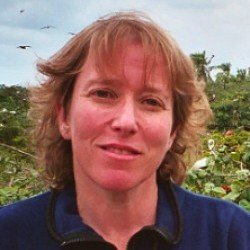
With two book coming out over the past four months, I’ve been a bit negligent of this site, but I’m hoping to be more consistent with my postings in the months ahead. This past week I finally had a chance to dive into a book I’ve been wanting to read for a while now: Seattle writer Adrienne Ross Scanlan’s Turning Homeward: Restoring Hope and Nature in the Urban Wild.
Scanlan’s book (which comes with a nice endorsement from nature-writing icon Kathleen Dean Moore, who calls her “a new voice in a new generation”) brings together eleven essays she wrote over several years about being an avid naturalist and “citizen scientist” in her adopted city. Although I grew up in Seattle, Scanlan has explored its natural side far more than I have, and her compelling stories and statistics about urban salmon runs, bird dissemination, and animal adaptation surprised and fascinated me.
Her essay called “Montlake Fill,” for example–about a swampy area just north of the University of Washington exposed by the cutting of an outlet from Lake Washington to Puget Sound (and site of a city dump when I was a kid)–reveals the presence of ring-necked pheasants, short-eared owls, California quail, and a myriad of other birds and animals in a place I’ve only driven by.
The essay is my favorite in the collection, not only because it fills in gaps in my knowledge of the wild side of my hometown, but also because it brings most poignantly together Scanlan’s various themes: the changing nature of “home” (for animals as well as humans), the “native” vs. “invasive” species debate in scientific circles, the wonder and questions that come from exploring the wilder sides of where we live, and the tradeoffs inherent in “repairing” environments species have already adapted to.
(After a habitat restoration project that began in the 1990s, those pheasants, quail, and other animals that once lived below the ubiquitous–and now eradicated–Himalayan blackberry [in what has been renamed the Union Bay Natural Area] are gone.)

Scanlan weaves parts of her Judaism through many of the essays as a way of deepening the meaning of honoring nature, actively living out beliefs, and serving both people and the natural world. She focuses on one Jewish concept in particular, tikkun olan, which, among its various interpretations, has been taken to mean “straightening” or “repairing” in connection with “community, society, and world, even universe and eternity.” A more modern interpretation, she tells us, is “repair-focused actions.”
Scanlan, a transplant from New York, has not only embraced the Northwest ethos but used her involvement in salmon counts, habitat restoration, and “fish flings” (which she warns her husband “will be the most disgusting thing you ever do”) to deepen her connection to–and feelings of harmony with–her new home. She writes intimately and beautifully about the sensations, emotions, and questions her hands-on experiences evoke.
Her desire to move closer to (and assist) the natural order in a concrete-covered environment comes, she says, not only from wanting her new-born daughter to inherit a better world, but also, and even more, “from the everyday gratitude of knowing turtles, toads, or whatever nature graces our small corner of the world.”
Despite many of the things she discovers and the often-dismaying statistics she reports, Scanlan infuses her book with hope. Not a false hope but an honest, infectious ability to see the good that lingers around us even though the pristine natural world is gone. “No matter the roads I took or the streams I explored,” she writes, “it was everywhere to see: this broken world, full of lost spaces, filling its scars with beauty, bursting not with the life that was, but with what could still be.”
The copy of Scanlan’s book I read is a 2023 update of the original version published by Mountaineers Books in 2016 (finalist for a Washington State Book Award in 2017). It includes more-recent statistics and a new author’s note. It also includes several pages of resources for those who’d like to do what Scanlan has done: deepen their involvement with what she reveals to be an amazingly diverse, hybrid home for humans, animals, and plants alike.
Links:
Scanlan blog posts at the Center for Humans and Nature
Turning Homeward: Restoring Hope and Nature in the Urban Wild on Bookshop.org
The Union Bay Natural Area (formerly the Montlake Fill)–official site, with maps, directions, histories, and other interesting stuff
Note: I’m an affiliate of Bookshop.org, where your purchases support local bookstores. If you buy a book through a click on this website, I’ll earn a small commission that helps defray the costs of maintaining WritingtheNorthwest.com.

Leave a Reply